École Polytechnique Fédérale de Lausanne
École polytechnique fédérale de Lausanne (EPFL) | |
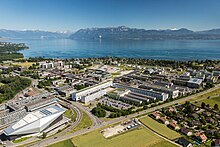 Campus of EPFL
| |
Other name |
German: Eidgenössische Technische Hochschule Lausanne |
|---|---|
| Type | Public research university |
| Established | 1969 |
| Budget | 1.063 billion CHF (2020) |
| President | Martin Vetterli |
Academic staff |
350 (2023) |
Administrative staff |
1,195 (2016) |
| Students | 12,720 (headcount 2021 excluding CMS & CAS, 30.2% female) |
| Undergraduates | 6,428 (2021) |
| Postgraduates | 6,115 (2021) |
| Location |
, ,
46°31′13″N 6°33′56″E |
| Campus | Urban |
| Language | French, English |
| Nationalities | 125+ |
| University Press | Dimensions |
| Colours | Swiss red |
| Affiliations | AUF, CESAER, EUA, EuroTech, RESCIF and TIME |
| Website | epfl.ch |
 | |
The École polytechnique fédérale de Lausanne (EPFL; English: Swiss Federal Institute of Technology in Lausanne; German: Eidgenössische Technische Hochschule Lausanne) is a public research university in Lausanne, Switzerland. Established in 1969, EPFL has placed itself as a public research university specializing in engineering and natural sciences.
EPFL is part of the ETH Domain, which is directly dependent on the Federal Department of Economic Affairs, Education and Research.
Inspired by French engineering school École Centrale Paris, EPFL was established to "train talented engineers in Switzerland". The school has an urban campus that extends alongside Lake Geneva, and includes the EPFL Innovation Park as well as university research centers and affiliated laboratories.
History


The roots of modern-day EPFL can be traced back to the foundation of a private school under the name École spéciale de Lausanne in 1853 at the initiative of Lois Rivier, a graduate of the École Centrale Paris and John Gay, the then professor and rector of the Académie de Lausanne. At its inception it had only 11 students and the offices was located at Rue du Valentin in Lausanne.
In 1869, it became the technical department of the Académie de Lausanne. When the Académie was reorganized and acquired the status of a university in 1890, the technical faculty changed its name to École d'ingénieurs de l'Université de Lausanne. In 1946, it was renamed the École polytechnique de l'Université de Lausanne (EPUL). In 1969, the EPUL was separated from the rest of the University of Lausanne and became a federal institute under its current name. EPFL, like ETH Zurich, is thus directly controlled by the Swiss Federal Council.
In contrast, all other universities in Switzerland are controlled by their respective cantonal governments. Following the nomination of Patrick Aebischer as president in 2000, EPFL has started to develop into the field of life sciences. It absorbed the Swiss Institute for Experimental Cancer Research (ISREC) in 2008.
In 1946, there were 360 students at EPFL. In 1969, the university had grown to 1,400 students and 55 faculty members.
In the past two decades, EPFL has grown rapidly in reputation and size. As of 2023, EPFL has more than 13,000 full-time students.
The environment at modern day EPFL is highly international with the school attracting students and researchers from all over the world. More than 125 countries are represented on the campus and the university has two official languages, French and English.
Academics
Admission
Holders of a Swiss "maturité gymnasiale" are directly accepted with no other condition in the first year of their Bachelor's program of choice.
Holders of a Swiss Professional "Maturité" or a Swiss specialised "Maturité" are accepted in the Cours de mathématiques spéciales (CMS) within the places available.
As such, EPFL is not selective in its undergraduate admission procedure for Swiss residents.
However, international students are required to have a final grade average of 80% or above of the maximum grade of the upper secondary school national system.
The real selection process happens during the first year of undergraduate studies. This period is called the propaedeutic cycle and the students must pass a block examination of all the courses taken during the first year at the end of the cycle.
If the weighted average is insufficient, a student is required to retake the entire first year of coursework if they wish to continue their studies at EPFL. Roughly 60% of students fail the first year at EPFL all majors combined, and many choose to drop out rather than to repeat the propaedeutic cycle.
The failure rate differs between majors, it is higher for Life Sciences Engineering, Physics and Electrical Engineering where only 30–40% of students pass the first year.
For foreign students, the selection procedure towards the undergraduate program is rather strict, and since most undergraduate courses are taught in French, foreign students must provide documentation of having acquired a level B2 proficiency in French as measured on the CEFR scale, though C1 proficiency is recommended.
The usual time till graduation is six semesters (3 years) for the Bachelor of Science degree and four additional semesters (2 years) for the Master of Science degree with the final semester dedicated to writing a thesis. Though only 58% of the students who manage to graduate are able to graduate within this time-period.
The possibility to study abroad for one or two semesters is offered during the 3rd year of studies as EPFL maintains several long-standing student exchange programs, such as the junior year engineering and science program with Carnegie Mellon University in the United States, as well as a graduate Aeronautics and Aerospace program with the ISAE in France.
Entrepreneurship is actively encouraged at EPFL, as evident by the EPFL Innovation Park being an integral part of the campus. Since 1997, 12 start-ups have been created per year on average by EPFL students and faculty. In the year 2013, a total of 105 million CHF was raised by EPFL start-ups.
Rankings
| University rankings | |
|---|---|
| Ecole polytechnique fédérale de Lausanne | |
| Global – Overall | |
| ARWU World | 54 (2023) |
| QS World | 36 (2024) |
| Reuters World | 12 (2018) |
| RUR World | 19 (2023) |
| THE World | 33 (2024) |
In 2023, the QS World University Rankings ranks EPFL 16th worldwide across all fields, and among the 10 best universities in several engineering disciplines. Times Higher Education ranks EPFL as the world's 19th best school in the world for Engineering and Technology.
EPFL typically scores high on faculty to student ratio, international outlook and scientific impact. The CWTS Leiden Ranking that "aims to provide highly accurate measurements of the scientific impact of universities" ranks EPFL world 13th, and 1st in Europe in the 2013 rankings for all the sciences.
The Times 100 Under 50 Rankings is a ranking of the top 100 universities in the world under 50 years old. Since EPFL in its current form was formed in 1969, it is included in this ranking, and was ranked 1st in the world for three years in a row in 2015, 2016 and 2017, and 2nd in the world in 2018 and 2019.
Times Higher Education also ranked EPFL as the most international university in the world two years in a row 2014 and 2015.
Campus


The École d'ingénieurs de l'Université de Lausanne, from which EPFL in its modern-day form originates, was located in the center of Lausanne. In 1974, five years after EPFL was separated from University of Lausanne and became a federal institute under its current name, the construction of a new campus at Dorigny in Écublens, began. The inauguration of the first EPFL buildings of the new campus took place in 1978.
The EPFL campus has been evolving ever since. The first stage of development, with a total budget of 462 million Swiss francs, was completed in 1984; the second in 1990.
Construction of the northern parts of campus began in 1995 with the Microtechnology building (BM), completed in 1998, and the architecture building (SG), completed in 2000. In 2002, the department of architecture also moved to the campus in Écublens, uniting all departments of EPFL on the same site. The latest addition to the EPFL campus is the Rolex Learning Center completed in February 2010. The Rolex Learning Center is the main campus library and includes areas for work, leisure and services and is located at the center of the campus. The campus has also been expanded with the construction of the SwissTech Convention Center inaugurated in March 2014. As of 2022, RTS began the construction of a regional production center on campus in collaboration with EPFL.
Together with the University of Lausanne, EPFL forms a vast campus complex at the shores of Lake Geneva with about 20,000 students combined.
The campus is served by the Lausanne Metro Line 1 (M1) and is equipped with an electric bicycle sharing system. Since 2012, only electricity from certified hydroelectric generation is being bought by EPFL to power its campus. The university was the first campus to receive the International Sustainable Campus Excellence Award by the International Sustainable Campus Network.
Of the 14,000 people that work and study at the École Polytechnique Fédérale de Lausanne campus, roughly 9.300 are students in either Bachelor, Master or Doctoral programs, the remaining 4,700 being administrative staff, scientists, technical staff, professors and the entrepreneurs located in the Science Park EPFL7. More than 125 nationalities are represented on campus with 48% of the student population being foreign nationals.
Almost all of the structures are on its main campus. However, it also has branches in Neuchâtel ("Microcity"), in Sion ("Pôle EPFL Valais"), in Geneva (Campus Biotech, including the Wyss Center for Bio- and Neuro-engineering) and in Fribourg ("Smart Living Lab"). There is also a research centre in Ras al-Khaimah (United Arab Emirates), EPFL Middle East.

Buildings

The campus consists of about 65 buildings on 136 acres (55 ha). Built according to the growth of the school, the campus includes different types of architectures:
- Late 1970s–1980s: modularised building, used today by the Schools of Basic Sciences and Architecture, Civil and Environmental Engineering, Mechanical and Electrical Engineering
- 1990s: buildings with institutes from the Schools of Engineering Sciences and Techniques, Computer and Communication Sciences, and the Scientific Park (PSE)
- Modern: new buildings (2002–2004) with Microengineering, Communications and Architecture institutes, the School of Life Sciences and the College of Management.
- The Rolex Learning Center, a new library (2010)
- 2014: The SwissTech Convention Center and the "Quartier Nord" (convention center, student accommodation, shops...)
- The EPFL-Pavilions building (previously Artlab), designed by Japanese architect Kengo Kuma, was opened in November 2016; it includes three spaces opened to the public. The first one hosts archives from the Montreux Jazz Festival; the second is a space for museum experimentations. The third space, named DataSquare, hosts an exposition on Big data, illustrated by two scientific projects from EPFL: the Human Brain Project and the Venice Time Machine.
- Museums: Musée Bolo, Archizoom (EPFL).
The EPFL and the University of Lausanne also share an active sports centre five minutes away from EPFL, on the shores of Lake Geneva.
Associated campuses

Beyond its main campus, EPFL operates a network of associated campuses in Western Switzerland, often sharing these spaces with partner academic institutions and hospitals:
- Fribourg: Smart Living Lab
- Neuchâtel: Microcity
- Geneva: Campus Biotech
- Sion: EPFL Valais/Wallis
Language Centre
The Language Centre offers language and communication modules for French, German, Italian and English (CEFR levels A1 to C2) to enable learners to participate more effectively in academic, professional and social situations in an internationalized multilingual and multicultural context. These modules are reserved for EPFL students, staff members and for their spouses.
Tandems are also organized and set up within the framework of the Tandem Program of the Faculty of Arts/EFLE of the University of Lausanne. This concept includes two people of different first languages meeting regularly to teach each other their respective language.
Students and traditions
Student body
The number of students attending studying at EPFL has been rising heavily since EPFL was formed in 1969 under its current name. In 1969 EPFL had roughly 1400 students; that number had grown to 2367 by 1982, 4302 by 1997, 9921 students in 2014, and 10,536 students at the end of 2016. Within the student body, 112 different nationalities are represented. In the period from 1982 to 2014 the female proportion of the student body has increased from 12% to 27%. The proportion of female students is lowest at the School of Computer Science and Communication (15%) and highest at the School of Life Sciences (49%).
Clubs

The school encourages the formation of associations and sports activities on campus. As of 2023, there are nearly a hundred clubs and associations on campus for recreational and social purposes. In addition, the school has its own monthly newspaper, Flash. Included in the 79 associations are
- AGEPoly is the Student's Association. Its purpose is to represent the EPFL's students, defend the general interests of the students and inform and consult its members on decisions of the EPFL Direction that concern them.
- The Forum is a student association responsible for organization of the Forum EPFL. The Forum was founded in 1982 as a platform for exchange and meeting between the academic and professional communities. Today, it is one of the largest recruiting events in Europe, and the largest in Switzerland.
- UNIPOLY is the EPFL Association for Ecology, the Association works to create awareness of ecology on campus and in western Switzerland. UNIPOLY is part of the World Student Community for Sustainable Development, an international network of student organizations for sustainable development consisting of EPFL, ETH Zurich, MIT, University of Tokyo, University of Fort Hare, University of Nairobi, Chalmers, and University of Yaounde.
- The Anime and Manga club, PolyJapan, schedules viewings of seasonal anime on a regular basis.
Music festivals
Several music festivals are held yearly. The largest one is the Balélec Festival, organized in May each year since 1981. The festival welcomes 15,000 visitors to around 30 concerts.
Archimedean Oath
EPFL was the birthplace of the Archimedean Oath, proposed by students in 1990. The Archimedean Oath has since spread to a number of European engineering schools. The Archimedean Oath is an ethical code of practice for engineers and technicians, similar to the Hippocratic Oath used in the medical world.
Harassment and sexism
In 2020, the student association Polyquity published numerous testimonies from students via an Instagram account @payetonepfl denouncing cases of sexual, homophobic and racist harassment as well as cases of rape within the associations present on campus but also within the teaching staff. The student association denounces serious failings of the institution that is supposed to manage harassment.
EPFL Alumni network
The mission of EPFL Alumni is to provide graduates of the school an international network and a strong and lasting relationship upon graduation.
It offers graduates a directory of over 30,000 EPFL graduates across the globe with access reserved to alumni. It provides opportunities for meeting, training and consulting, and created a platform for exchange and services on topics as diverse as career, expatriation, research, entrepreneurship and volunteerism. The alumni group ensures that graduates can benefit from the support of older peers by fostering opportunities to meet in Switzerland or abroad. In 2018, a new initiative was launched for alumni to mentor young graduates and prepare them for the EPFL Forum event as well as their first steps in the professional world.
EPFL Alumni have built a strong international network divided into 27 chapters. They independently offer activities, conferences and outings, with financial and logistical support from EPFL Alumni and EPFL.
Scientific partners
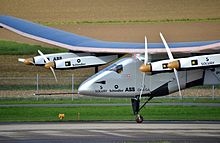
- EPFL is the official scientific advisor of Alinghi, twice winners of the America's cup 2003 and 2007.
- Solar Impulse is a Swiss long-range solar powered aircraft project developed at EPFL, the project has now achieved the first circumnavigation of the world using only solar power.
- The Hydroptère, is an experimental sailing hydrofoil that in 2009 broke the world speed sailing record, sustaining a speed of 52.86 knots (97.90 km/h; 60.83 mph) for 500m in 30 knots of wind
- EPFL contributed to the construction of SwissCube-1. It is the first satellite entirely built in Switzerland. It was put into orbit on 23 September 2009 by the Indian launcher PSLV.
- To better understand the relationship between nutrition and the brain, EPFL and the Nestlé research center has signed a five-year agreement providing 5 million CHF each year for the creation of two new chairs at the EPFL Brain Mind Institute.
- Logitech and EPFL has announced the creation of the EPFL Logitech Incubator that will provide financial, educational and operational support in entrepreneurship to researchers and students.
- Breitling Orbiter 3 became the first balloon to circumnavigate the Earth non-stop in March 1999. The balloon was piloted by Bertrand Piccard and Brian Jones.
- Solar Impulse 2 completed the first circumnavigation of the Earth by a piloted fixed-wing aircraft using only solar power. The plane was piloted (alternatively) by André Borschberg and Bertrand Piccard.
- The Human Brain Project is the successor of the EPFL Blue Brain Project. The project is directed by EPFL and involves 86 institutions across Europe. The total cost is estimated at 1.190 billion euros.
- EPFL has hosted the UNESCO Chair in Technologies for Development since 2007, where notable papers are presented by experts in the field. In 2014, Mobile Financial Services in Disaster Relief: Modeling Sustainability was presented by technology analyst, David Garrity.
Schools & Colleges

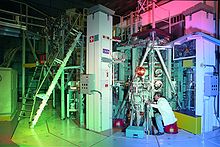
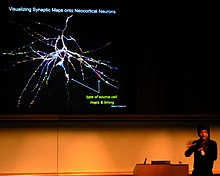

EPFL is organised into eight schools and colleges, themselves formed of institutes that group research units (laboratories or chairs) around common themes:
-
School of Basic Sciences (SB, Paul Joseph Dyson)
- Institute of Mathematics (MATH, Victor Panaretos)
- Institute of Chemical Sciences and Engineering (ISIC, Emsley Lyndon)
- Institute of Physics (IPHYS, Harald Brune)
- European Centre of Atomic and Molecular Computations (CECAM, Ignacio Pagonabarraga Mora)
- Bernoulli Center (CIB, Nicolas Monod)
- Biomedical Imaging Research Center (CIBM, Rolf Gruetter)
- Interdisciplinary Center for Electron Microscopy (CIME, Cécile Hébert)
- Max Planck-EPFL Centre for Molecular Nanosciences and Technology (CMNT, Thomas Rizzo)
- Swiss Plasma Center (SPC, Ambrogio Fasoli)
- Laboratory of Astrophysics (LASTRO, Jean-Paul Kneib)
-
School of Engineering (STI, Ali Sayed)
- Institute of Electrical Engineering (IEL, Giovanni De Micheli)
- Institute of Mechanical Engineering (IGM, Thomas Gmür)
- Institute of Materials (IMX, Michaud Véronique)
- Institute of Microengineering (IMT, Olivier Martin)
- Institute of Bioengineering (IBI, Matthias Lütolf)
-
School of Architecture, Civil and Environmental Engineering (ENAC, Claudia R. Binder)
- Institute of Architecture
- Civil Engineering Institute
- Environmental Engineering Institute
-
School of Computer and Communication Sciences (IC, Rüdiger Urbanke)
- Algorithms & Theoretical Computer Science
- Artificial Intelligence & Machine Learning
- Computational Biology
- Computer Architecture & Integrated Systems
- Data Management & Information Retrieval
- Graphics & Vision
- Human-Computer Interaction
- Information & Communication Theory
- Networking
- Programming Languages & Formal Methods
- Security & Cryptography
- Signal & Image Processing
- Systems
-
School of Life Sciences (SV, Andrew Oates)
- Bachelor-Master Teaching Section in Life Sciences and Technologies (SSV)
- Brain Mind Institute (BMI, Carmen Sandi)
- Institute of Bioengineering (IBI, Melody Swartz)
- Swiss Institute for Experimental Cancer Research (ISREC, Douglas Hanahan)
- Global Health Institute (GHI, Bruno Lemaitre)
- Ten Technology Platforms & Core Facilities (PTECH)
- Center for Phenogenomics (CPG)
- NCCR Synaptic Bases of Mental Diseases (NCCR-SYNAPSY)
-
College of Management of Technology (CDM)
- Swiss Finance Institute at EPFL (CDM-SFI, Damir Filipovic)
- Section of Management of Technology and Entrepreneurship (CDM-PMTE, Daniel Kuhn)
- Institute of Technology and Public Policy (CDM-ITPP, Matthias Finger)
- Institute of Management of Technology and Entrepreneurship (CDM-MTEI, Ralf Seifert)
- Section of Financial Engineering (CDM-IF, Julien Hugonnier)
-
College of Humanities (CDH, Thomas David)
- Human and social sciences teaching program (CDH-SHS, Thomas David)
In addition to the eight schools there are seven closely related institutions:
- Swiss Cancer Centre
- Center for Biomedical Imaging (CIBM)
- Centre for Advanced Modelling Science (CADMOS)
- École cantonale d'art de Lausanne (ECAL)
- Campus Biotech
- Wyss Center for Bio- and Neuro-engineering
- Swiss National Supercomputing Centre
Notable people
Presidents
The school had directors from 1853 to 1969. In 1969, the school was separated from the rest of the University of Lausanne and became a federal institute. The presidents are:
- Maurice Cosandey (1969–1978)
- Bernard Vittoz (1978–1992)
- Jean-Claude Badoux (1992–2000)
- Patrick Aebischer (2000–2016)
- Martin Vetterli (2017–)
Professors
- Adrian Mihai Ionescu (Professor, Micro/Nano-electronics, Nanoelectronic Devices Laboratory)
- Álvaro Siza Vieira, Portuguese architect, (Guest Professor, Architecture), Pritzker Prize 1992
- Amin Shokrollahi (Professor, Computer Science and Communication Systems and Mathematics. Best known for the invention of Raptor codes)
- Anastasia Ailamaki (Professor, database systems and applications)
- Andrea Ablasser (Assistant Professor, immunology)
- Andrew Oates (Professor, biological timing, patterning, oscillators, synchronisation)
- Arjen Lenstra (Professor, cryptographic algorithms)
- Babak Falsafi (Professor, computer architecture and digital platform design)
- Bart Deplancke (Professor, biology and genetics)
- Bernard Moret (Professor emeritus, computational phylogenetics)
- Boi Faltings (Professor, artificial intelligence)
- Carmela Troncoso (Professor, security and privacy engineering)
- Claude Nicollier (Professor, spatial technology and astronaut)
- Daniel Thalmann (Professor, Computer Science and Communication Systems, Pioneer in Virtual Humans)
- Dario Floreano (Professor, intelligent systems)
- David Chipperfield, British architect, (Guest Professor, Architecture)
- Denis Duboule (Professor, Life Sciences)
- Edouard Bugnion (Swiss software architect and businessman, VMware cofounder)
- Edoardo Charbon (Professor, electrical engineering)
- Eduardo Souto de Moura, Portuguese architect, (Guest Professor, Architecture), Pritzker Prize 2011
- Francesco Mondada (Professor, mobile robotics)
- Friedhelm Hummel (Professor, neuroengineering)
- Georges Meylan (Professor, astrophysics and cosmology)
- Giovanni De Micheli (Professor, integrated systems)
- Gisou van der Goot (Professor, cell biology)
- Henry Markram (Professor, neurology, director of the Human Brain Project)
- Hubert Girault (Professor, physical and analytical electrochemistry)
- Jean-Daniel Nicoud (Professor, Computer science, inventor of the modern ball mouse)
- Jacques Lévy (Professor, geography and urbanism at the School of Architecture, Civil and Environmental Engineering)
- János Pach (Professor Emeritus, Mathematics, One of the few living Mathematicians with Erdős number 1)
- Jean-François Molinari (Professor, computational solid mechanics)
- Jean-Luc Sandoz (Professor, civil engineer, timber specialist, inventor of Sylvatest and Polux)
- Jean-Pierre Hubaux (Professor, security and privacy)
- Joseph Sifakis (Professor, Computer science, Turing Award laureate)
- Karen Scrivener (Professor of Material Sciences, founder of Nanocem and inventor of LC3)
- Luigi Snozzi
- Lyesse Laloui (Professor and director of Laboratory of Soil Mechanics)
- Martin Odersky (Professor, programming methods, inventor of Scala)
- Martin Hairer (Professor of Mathematics, developed the theory of regularity structures, awarded a Fields Medal in 2014)
- Martin Vetterli (Professor in the School of Computer and Communication Sciences EPFL)
- Maryna Viazovska (Professor, Mathematician, solved the Sphere packing problem in dimension 8 and 24, awarded a Fields Medal in 2022)
- Michael Grätzel (Professor, Photonics and Interfaces Sciences, Inventor of the dye-sensitized solar cells)
- Minh Quang Tran (Professor, physics of energy and particles)
- Murat Kunt (Professor Emeritus, former Director of the Signal Processing Laboratory)
- Nicolas Grandjean (Professor, physics)
- Pascal Vitali Fua (Professor, computer vision)
- Patrick Thiran (Professor, network and systems theory)
- Raphael Zuber (Visiting Professor of architecture)
- Reymond Clavel (Professor, robotics and micro engineering, inventor of the Delta robot)
- Rüdiger Urbanke (Professor, coding, communications, information theory, graphical models, statistical physics for communications and computing)
- Sabine Süsstrunk (Professor, images and visual representation), president of the Swiss Science Council
- Serge Vaudenay (Professor, security and cryptography)
- Victor Panaretos (Professor, mathematical statistics)
Alumni


- Guy Berruyer (chief executive of Sage Group)
- Mattia Binotto (team principal of Scuderia Ferrari)
- Aart de Geus (chairman, founder and CEO of Synopsys)
- George de Mestral (electrical engineer, inventor of Velcro)
- Eric Favre (inventor of Nespresso, the first single-serve coffee container)
- André Gorz (Austrian-French philosopher and economist)
- Daniel Borel (co-founder of Logitech)
- Franck Riboud (CEO of Danone)
- André Kudelski (CEO of Kudelski)
- Jean-Daniel Nicoud (Swiss computer scientist)
- Othman Benjelloun (Moroccan businessman)
- Daniel Brélaz (Swiss Mathematician, Politician and Environmentalist)
- Stefan Kudelski (Industrialist, inventor of the Nagra)
- Luc Recordon (Swiss politician)
- André Borschberg (businessman and pilot, founder of the Solar Impulse project)
- Jacques Dubochet (winner of the 2017 Nobel Prize in Chemistry)
- Guillaume Pousaz (founder of Checkout.com)
- Alexandra Ros (German analytical chemist)
Gallery
Buildings and campus
-
 An aerial view of campus
An aerial view of campus -

-
 The BM and BP buildings
The BM and BP buildings -
 The BC building
The BC building -
 The Esplanade
The Esplanade -
 The CO building
The CO building -
 The Odyssea building
The Odyssea building -
 Artlab
Artlab -
 The Polydôme
The Polydôme
Projects and partnerships
-
 The CROCUS research reactor.
The CROCUS research reactor. -

-
The Hydroptère.
-
Boats of Alinghi.
-
 The Biowall.
The Biowall. -
 The Musée Bolo.
The Musée Bolo. -
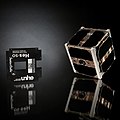 Swiss Cube 1, the first Swiss satellite.
Swiss Cube 1, the first Swiss satellite. -
 Solar Impulse achieved the first round-the-world solar flight.
Solar Impulse achieved the first round-the-world solar flight.
- Human Brain Project: a large 10-year scientific research project, established in 2013, coordinated by Henry Markram (EPFL) and largely funded by the European Union. It aims to provide a collaborative informatics infrastructure and first draft rodent and human whole brain models within its 10-year funding period. It includes 112 research partners in 24 countries in Europe as well as outside Europe.















